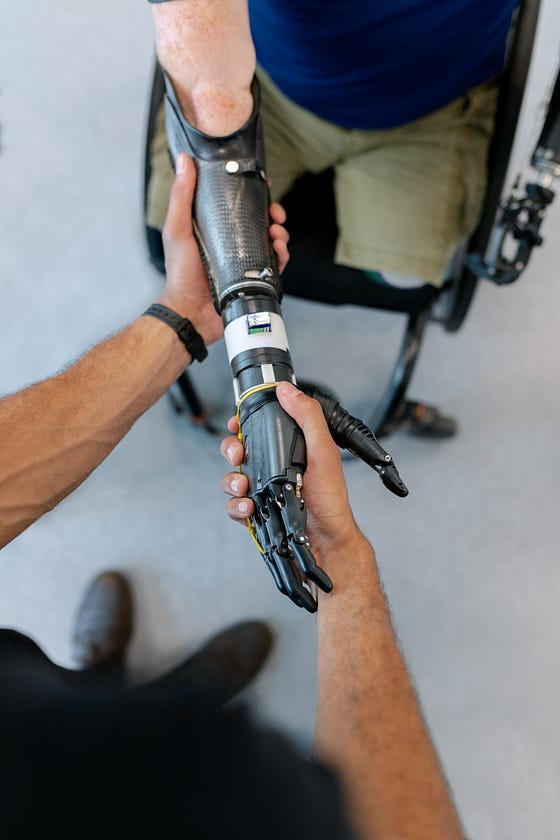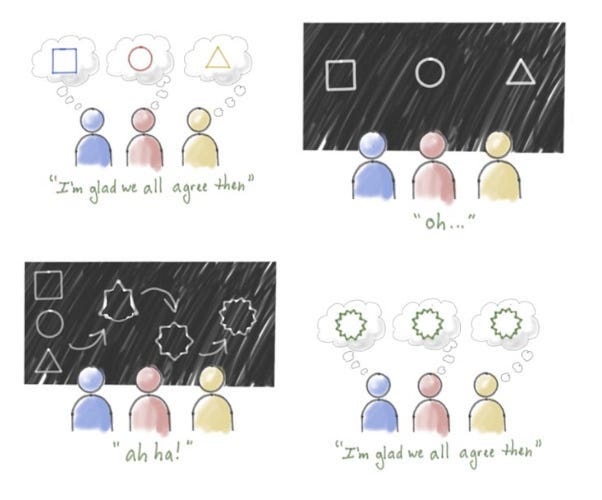Now that ChatGPT is here, can we please let lorem ipsum die?
ChatGPT can ensure you have real text with your first design iterations

I don’t believe that AI will kill UX Design, but I think we can finally kill dumb design habits with it.
If you haven’t heard, ChatGPT is an advanced chatbot created by OpenAI, makers of a large language processing model called GPT-3. Users can ask open-ended questions about any topic and get answers generated specifically for that question.
Now that the hype has died down and more people are actually finding uses for how to incorporate it into your UX process, there’s one thing that’s becoming increasingly clear: You have no excuse for still using lorem ipsum in your work.
To explain why, let’s first understand why writing matters to UX.
The importance of writing in UX Design
One thing I’ve realized is that behind every design is a business need. You might re-design (or design) based on user needs, but the reason you have a budget and resources is that the business also cares about that.
Whether you’re building a new feature that users want (to increase new customers) or fixing something that users hate (and helping to retain users), the reason UX is given a budget and resources is that we help both businesses and users.
While design elements might be focused on the user behavior and psychology, the text elements you use are often directly related to business needs.
A simple word change, like “Get a Demo” vs “Schedule a Demo” can mean a lot to users, which is why “Schedule” was preferred by 64% of users.
However, this is a role UX Designers rarely take. If you have a proactive UX writer on the team, then maybe you don’t need to. But in most other cases, UX is often best suited towards this role.
The reason for this is twofold: leaving content until the later stages of your design causes issues, and your team members might not realize that things that are ‘obvious’ to them are foreign to the public.
But you still might hesitate, because you might not know how to start learning UX writing. Luckily for you, ChatGPT can help you with the thing you care most about: getting text for your first design iterations or drafts.
ChatGPT is a powerful tool for first drafts, including your prototypes
I’m overall pretty skeptical about ChatGPT, because people like to over-hype new technology as a game changer every 3–6 months.
However, one thing it’s best at is brainstorming and ideating for your first drafts. This makes it a perfect text companion for your designs. Whether it’s product copy, button names, headers, or more, ChatGPT can generate several options for you to pick from to put in your designs.
So you have no excuse to keep using lorem ipsum. Some of you have raised the point that lorem ipsum helps to get stakeholders focused on the design rather than spending time on the text. However, I’m firmly in favor of sketch copy instead of lorem ipsum at that stage, because with that you can avoid concentrating on the text but also see how much space the text is going to occupy.
When it takes the same time to copy lorem ipsum or write a ChatGPT prompt to copy over, there’s no reason to use the inferior option.
You might raise a bunch of complicated questions right now, like:
What are the ethics/plagiarism check of copying from an AI?
Aren’t I intruding on another person’s job? Will this make them pissed at me?
What if the text turns out wonky? What if ChatGPT puts something inaccurate there?
etc.
These are valid questions if you were to publish a website with your current design and text. But you’re not. You’re creating a prototype. When you do, you’re looking to do two things with it:
Get feedback from the rest of your team/users about this
ChatGPT helps you do both tasks, and this matters.
Stakeholders (almost) never comment on lorem ipsum
Prototypes are built to test ideas, but also because you want to make sure stakeholders have the same visual idea for a project. This allows them to give dedicated feedback about what they see.
Text should be treated the same way. Using Lorem Ipsum as a text pattern is roughly the equivalent of saying ‘placeholder image goes here’: your stakeholders will basically ignore what’s shown there and move on.
But showing some sample copy? That gets people talking. Even if they’re not happy about what’s shown there, you always learn something by including something that seems real. For example, I might learn that my button labels need to change, because it needs to be consistent with the rest of the suite of products.
These are insights that only come about through showing off your ideas to others: it’s far easier for a person to comment on text that’s there, rather than imagining what you might put there in place of lorem ipsum.
That’s something we as Designers can leverage.
ChatGPT is much more productive alternative to lorem ipsum
I love writing, which is why I write articles, books, and newsletters. But I know that writing is not for everyone.
I’ve talked about other text alternatives (like sketch copy) as possible alternatives to lorem ipsum, but ChatGPT has changed the game. AI-powered writing is better at first-drafts than humans will ever be, because it focuses on a machine’s strengths (defined by Paul Fitts 60 years ago): Speed, power, and replication.
It won’t replace UX writing (or writing), because what you publish isn’t your first draft. There’s still a need for your judgment, critical thinking, and iteration. However, if you’re trying to get your stakeholders to talk and give feedback about what you’ve designed, don’t just stop at design elements: include sample text, generated by ChatGPT, to get feedback on that as well.
Doing so can ensure that your content and design aren’t kept separately until the last moment, which causes problems. So if you’ve ever struggled with what text to include in your designs, consider the power that ChatGPT brings.
Kai Wong is a Senior UX Designer, Design Writer, and author of the Data and Design newsletter. His new book, Data-informed UX Design, explains small changes you can make regarding data to improve your UX Design process.








You are completely right, which is why I hesitated to release this (as it's part of a larger series of posts around the topic). A way to have placeholder copy that is more useful than lorem ipsum exists and what I prefer: sketch copy. I wrote about this in an earlier post (https://uxdesign.cc/use-sketch-copy-instead-of-lorem-ipsum-to-save-yourself-some-headaches-773c62000c19), and how it has a number of key advantages: the primary one is that you can see how much space the placeholder sketch copy occupies, instead of a random amount of lorem ipsum.
I am in favor of using sketch copy until it's time to think about content, and then using ChatGPT from there (i.e. skipping lorem ipsum entirely).
The benefit of using lorem ipsum in some cases is that it's universally understood placeholder copy. Let's say I need to share a design for a confirmation modal, but we don't have the language from legal for a standardized disclaimer yet. Putting in an AI generated one can be more confusing than helpful. It's less clear to the developers and BA's that the copy isn't final, and it's too easy to misinterpret as correct. AI generated copy is a great alternative for many use cases, but sometimes you need people to intuit very quickly what's done in a design and what's not. I do think your point about getting stakeholders talking is an interesting one, and so true. Still, for some things they'll have no influence over, it's just not worth going down a rabbit hole when we already have limited time with them. How would you go about flagging what copy is final in a mockup vs what is generated to keep the team on the same page?